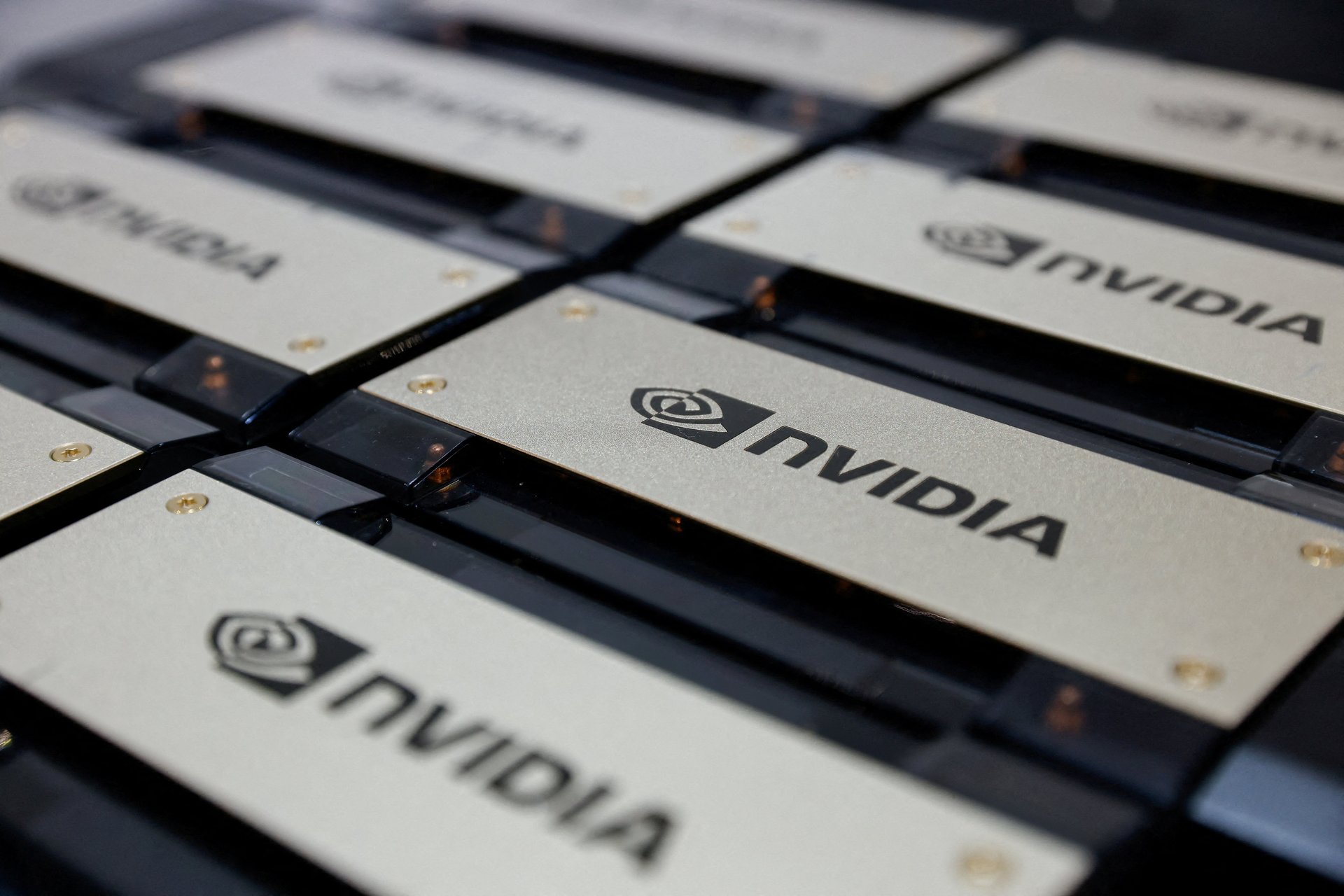Nvidia is walking a tightrope on China chip sales
The AI chipmaker, which beat sky-high earnings expectations, is navigating a narrow path between U.S. restrictions and Chinese advancements

Powered by surging demand from generative AI models, Nvidia late Wednesday reported a quarterly revenue increase of 265% compared to the prior year, earnings that beat big expectations and sent the stock of Wall Street’s hottest chipmaker surging anew.
Suggested Reading
But darker clouds are looming over Nvidia’s China business: The country accounted for just a mid-single-digit percentage of its data center chip revenue, the company said, down from 19% in fiscal year 2023.
Related Content
Colette Kress, Nvidia’s chief financial officer, was blunt about the company’s China outlook.
“Growth was strong across all regions except for China,” she said on an earnings call Wednesday, noting that data center-related revenue “declined significantly” following tightened U.S. government export rules in October.
Nvidia is trying to work within some rather tough parameters.
Washington wants to limit China’s access to Nvidia’s advanced computing and AI technologies. At the same time, “the U.S. government would like to see us be as successful in China as possible,” CEO Jensen Huang said.
That leaves a very narrow path to navigate, let alone a lucrative one.
Nvidia stock, whose rapid rise briefly sent the company’s market value past Amazon and Google parent Alphabet last week before it retreated Tuesday, was again surging Thursday morning, up about 14% in pre-market trading.
Nvidia faces dueling pressures from the U.S. and China
While Nvidia had previously rolled out lower-grade chips for sale to China to comply with the Washington’s October 2022 restrictions, the White House moved to close that loophole in updated export rules in October 2023. The company is now reportedly working on a new China-focused AI chip for release in the second quarter to comply with the latest restrictions. But it’s facing multiple pressures that could hamper the success of its forthcoming rule-abiding chip.
First, the U.S. government is likely displeased about having to keep playing whack-a-mole with Nvidia. “If you redesign a chip around a particular cut line that enables [China] to do AI, I’m going to control it the very next day,” Secretary of Commerce Gina Raimondo said in December, explicitly calling out Nvidia. She appeared to soften the message later that month, saying that Nvidia “can, will, and should sell AI chips to China because most AI chips will be for commercial applications.”
Second, it’s unclear whether Chinese companies will even want Nvidia’s new, lower-powered chip. By downgrading its product offering, Nvidia cuts into its performance lead over local alternatives and raises the incentives for Chinese customers to buy homegrown chips instead. Uncertainty over Nvidia’s ability to provide a steady supply of chips — no doubt exacerbated by Raimondo’s erratic messaging — also encourages Chinese firms to spurn Nvidia. Meanwhile, Chinese tech giant Huawei and state-owned chipmaker SMIC are rapidly developing their advanced semiconductor manufacturing capabilities, which will further erode Nvidia’s competitiveness in China.
“[As U.S.] sanctions become more strict, the appetite for Chinese firms to throw money at US-designed chips, even if they are compliant, is shrinking, because the specter of more strict sanctions is now always on the horizon,” analyst and investor Kevin Xu wrote in December. Once Chinese firms are done stockpiling U.S. chips, he wrote, “Nvidia’s China business will become a sacrificial lamb. The beneficiary of all this is, of course, Huawei.”